The Norse Runes: History, Symbols, and Meanings Explained
Norse runes are ancient symbols used by Germanic tribes for writing and magic. This article explores their origins, meanings, evolution from Elder to Younger Futhark, and their use in the Viking era and today.
- Norse runes originated in the 1st century AD, influenced by the Latin alphabet, evolving from Elder Futhark to the streamlined Younger Futhark during the Viking Age.
- The Elder Futhark consisted of 24 characters, used for both communication and magical practices; it provided insights into the cultural beliefs of early Germanic peoples.
- Runes possess historical and magical significance, continuing to impact modern culture through academic study and reinterpretation in popular media.
Origins of Norse Runes
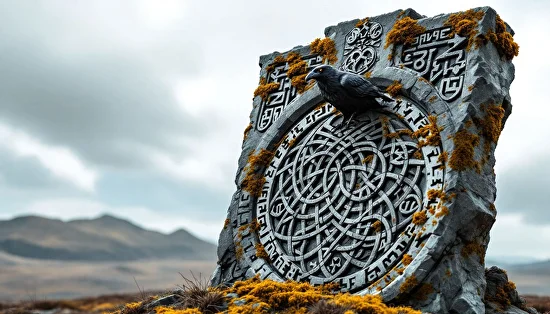
The story of Norse runes begins around the 1st century AD, in the lands occupied by Germanic tribes. These early runes were likely influenced by the Latin alphabet, a testament to the cultural exchanges that occurred through trade and conflict with the Romans. Unlike the more familiar rounded forms of Latin letters, runes possess a distinctly angular design. This characteristic was not merely aesthetic but practical, as these symbols were often carved into hard materials like wood and stone, where straight lines were far easier to incise than curves.
As time progressed, the runes evolved alongside the languages they represented. A significant transition occurred during the 7th and 8th centuries, as Proto-Norse gradually transformed into Old Norse. This linguistic shift gave rise to the Younger Futhark, a streamlined version of the original runic alphabet.
Before discussing this evolution, we should first explore the earliest form of runic writing: the Elder Futhark.
The Elder Futhark
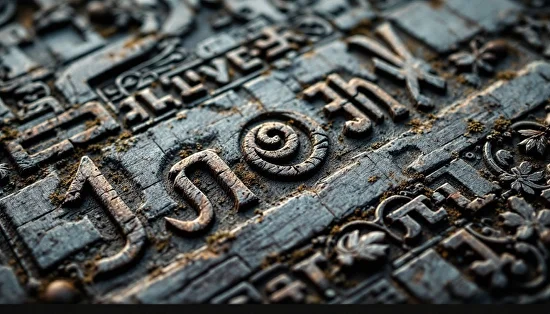
The Elder Futhark stands as the earliest and most well-documented form of the runic alphabet. Comprising 24 characters, this ancient script was used extensively by Germanic tribes from the 2nd to the 8th century AD. The Elder Futhark runes were not merely symbols for communication; they were imbued with cultural and mystical significance, often used in both everyday writing and magical practices.
As the bedrock of runic writing, the Elder Futhark provides invaluable insights into the lives and beliefs of the Old Norse and other Germanic peoples. Its usage spanned several centuries, marking a period of rich cultural expression.
Understanding the intricacies of this ancient script involves examining its structure and some of the earliest surviving inscriptions.
Structure of the Elder Futhark
The Elder Futhark consists of 24 distinct runes, each representing specific sounds and ideas. These characters were meticulously carved into various materials, often for both practical and ceremonial purposes. One of the most significant artifacts featuring the complete Elder Futhark is the Kylver Stone, dating back to the 5th century AD. This stone not only showcases early literacy among Germanic tribes but also reflects their commemorative practices, including elder futhark inscriptions.
By the late 8th century, the runic alphabet began to change significantly. Simplified representations of voiced and unvoiced consonants indicated an evolution in both the script and the language. These changes paved the way for the Younger Futhark. First, however, let's examine some of the earliest runic inscriptions.
Earliest Runic Inscriptions
The earliest runic inscriptions have been unearthed in regions such as Denmark, Northern Germany, and Southern Sweden, with examples dating back to around 150 AD. These inscriptions were often found on personal items like coins and weapons, highlighting their importance in everyday life. Notable artifacts include the Vimose inscriptions and the Kylver Stone, which date from the 2nd to the 4th centuries AD.
Among these ancient inscriptions, the oldest known reference to Odin—a central figure in Norse mythology—appears on a 5th-century golden coin. Such discoveries offer profound insights into the social, cultural, and magical beliefs of early Germanic peoples.
As we move forward in time, the runic script evolved, reflecting changes in the language and culture of the Norse people.
Evolution to Younger Futhark
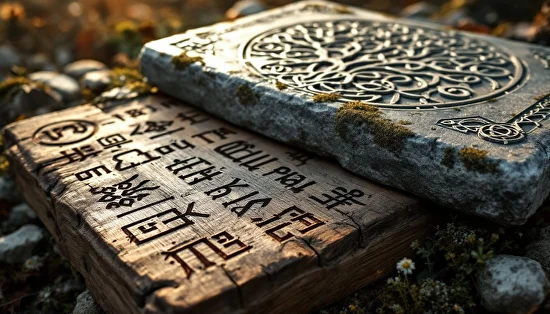
As the Viking Age dawned, the Elder Futhark underwent a significant transformation, giving rise to the Younger Futhark. This new alphabet reduced the number of runes from 24 to just 16. This reduction wasn't arbitrary but was closely linked to the phonetic changes in the Norse language during this period. The streamlined Younger Futhark was more efficient and better suited to the linguistic needs of the time.
During the transitional phase between these two runic systems, some inscriptions blended both the Elder and Younger Futhark, showcasing the evolution of the script. This period of change reflects the dynamic nature of the Norse language and its adaptation to new cultural and communicative contexts.
We can explore the specific forms of Younger Futhark runes, known as long branch and short twig runes.
Long Branch and Short Twig Runes
In the realm of Younger Futhark, two distinct forms emerged: long branch runes and short twig runes. The long branch runes, characterized by their extended strokes, were primarily used for monumental inscriptions on stone. These runes were intended to stand the test of time, commemorating significant events or figures within the Norse communities.
On the other hand, the short twig runes were more simplified and utilized for everyday writing on materials like wood. This functional distinction highlights the versatility and adaptability of the Younger Futhark runes, catering to both grand commemorative purposes and the practical needs of daily communication.
Examples of Younger Futhark Runes
Throughout Scandinavia, approximately 3,000 runestones feature inscriptions in Younger Futhark runes. These stones serve as enduring testaments to the widespread literacy and cultural richness of the Viking Age. Often erected to honor leaders and commemorate important events, these runestones provide a vivid glimpse into the past.
Notable examples of Younger Futhark runes can be found on runestones scattered across Denmark, Sweden, and Norway. Each of these stones tells a story, whether it is a tribute to a fallen warrior or a marker of territorial boundaries. The abundance of these inscriptions underscores the significance of runes in Viking society, both as a means of communication and as symbols of cultural identity.
Anglo-Saxon Runes and Futhorc
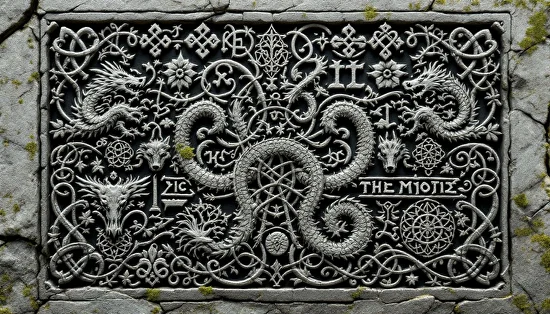
As the Elder Futhark spread across Northern Europe, it gave rise to various regional adaptations, including the Anglo-Saxon runes, or Futhorc. This runic alphabet expanded upon the Elder Futhark, increasing the number of characters to between 26 and 33 to accommodate the phonetic needs of Old English. The Anglo-Saxon Futhorc was used from the 5th century until the Norman conquest in 1066.
The Anglo-Saxon runes reflected the unique linguistic and cultural landscape of the British Isles. They were used for a variety of purposes, from everyday writing to ceremonial inscriptions. One of the most significant literary artifacts from this period is the Anglo-Saxon Rune Poem, which provides a fascinating glimpse into the meanings and uses of these runes.
Anglo-Saxon Rune Poem
The Anglo-Saxon Rune Poem is a remarkable piece of literature that dates back to the 9th century. This poem serves both a literary and educational purpose, linking each rune to an associated concept and reinforcing the cultural and linguistic identity of the Anglo-Saxon people. Each verse describes the significance of a rune, offering insights into the values and beliefs of the time.
Preserved from a copy dating to the 18th century, the Anglo-Saxon Rune Poem is believed to have originated much earlier. It stands as a testament to the rich cultural heritage of the Anglo-Saxon period and provides valuable information about the symbolic meanings attributed to each rune. This poem not only educated but also preserved the cultural identity of its people.
Notable Anglo-Saxon Inscriptions
Among the most significant Anglo-Saxon inscriptions is the one found at the burial site of Sutton Hoo. This site offers profound insights into the practices and beliefs surrounding death and the afterlife in Anglo-Saxon culture. The inscriptions found here reflect the blend of pagan and Christian ideologies that characterized this period.
Another notable example is the Ruthwell Cross, which illustrates the intersection of Christian themes with traditional Anglo-Saxon symbols. These inscriptions provide a window into the complex cultural and religious landscape of the Anglo-Saxon era. They underscore the importance of runes not only as a means of communication but also as carriers of cultural and spiritual significance.
Use of Runes in the Viking Era
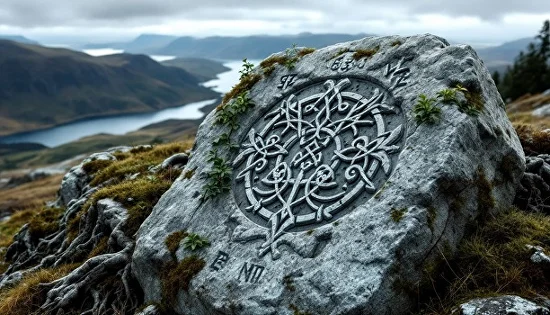
During the Viking Era, the use of runes expanded significantly, driven by the growth of trade and cultural interactions. Runes served both practical and commemorative purposes, being inscribed on everyday objects as well as large stones to honor leaders and their deeds. This period saw a marked increase in the production of runic inscriptions, reflecting the vibrant and dynamic culture of the Vikings.
While some runestones were crafted by professionals and used for grand commemorations, many runes were carved by everyday people on accessible materials like wood or bone. These inscriptions ranged from simple messages to complex magical symbols, highlighting the diverse uses of runes in Viking society.
Carved Runes on Wood and Stone
Common materials for rune carving in the Viking Era included wood and stone, chosen for their durability and potential for preservation. Long branch runes were primarily used for monumental inscriptions on stone, intended to last for centuries. These grand runestones often commemorated significant events or individuals, serving as enduring markers of history.
In contrast, short twig runes were more commonly used for everyday writing on wood. This practical form of runic writing allowed for communication and record-keeping in daily life. The distinction between these two forms of runes underscores the adaptability of the runic alphabet to different contexts and purposes.
Magical Symbols and Spells
In Norse culture, runes were more than just a writing system; they were believed to possess magical properties. Certain runes were thought to have encoded meanings and were often used in secretive runic messages or spells. These magical symbols were inscribed on objects like amulets to invoke protection or blessings, reflecting the Norse belief in supernatural powers.
Norse mythology and sagas provide numerous examples of runes being used for magical purposes. Rituals and incantations often called upon the gods or sought to alter fate, using runes as powerful tools in these practices. The magical significance of runes adds another layer of depth to our understanding of their role in Viking society.
Modern Interpretations and Uses of Runes
Today, the study of runes encompasses both academic research and a resurgence of interest in their mystical aspects. Scholars focus on translating ancient texts and examining the historical significance of runic inscriptions. This academic study, known as runology, involves critical analysis of historical manuscripts and the reconstruction of rune meanings.
Beyond scholarly pursuits, runes hold a prominent place in popular culture. Contemporary art, literature, and media often use runic symbols, drawing on their historical and cultural significance. Whether in fantasy novels or video games, runes evoke a sense of ancient wisdom and power.
Academic Study of Runes
The academic study of runes, or runology, is a field dedicated to unraveling the mysteries of these ancient symbols. Runologists meticulously analyze runic inscriptions, placing them within their historical contexts to understand their philological significance. Due to the passage of time and the loss of original interpretations, scholars often rely on historical manuscripts to reconstruct the meanings of runes.
Modern interpretations of runes sometimes differ significantly from traditional meanings, especially in neopagan contexts. This dichotomy between historical and contemporary understandings is a focal point of academic study, as researchers strive to preserve the authenticity of runic knowledge while acknowledging its evolving nature.
Runes in Popular Culture
Runes have transcended their historical origins to become powerful symbols in popular culture. Prominent linguist Jackson Crawford has played a significant role in promoting accurate information about Norse language and mythology through his educational YouTube channel. His work extends to consulting for films and video games, helping to integrate runes into modern narratives in a way that respects their historical authenticity.
In contemporary art and literature, runes are often used to evoke themes of mysticism and ancient knowledge. Businesses and brands sometimes incorporate runic symbols to suggest a sense of strength and heritage. Whether in fantasy novels, movies, or video games, runes continue to capture the imagination, bridging the gap between the ancient past and the present day.
SummaryFrom their origins among Germanic tribes to their modern-day interpretations, Norse runes have traversed a fascinating journey through history. The Elder Futhark, with its 24 characters, laid the foundation for runic writing, evolving into the more streamlined Younger Futhark as the Viking Age began. The Anglo-Saxon runes, or Futhorc, further demonstrate the adaptability and cultural significance of these symbols across different regions and eras.
Today, runes continue to be a subject of scholarly study and a source of inspiration in popular culture. Their multifaceted roles—as practical tools, magical symbols, and cultural artifacts—underscore their enduring legacy. As we conclude our exploration, we are reminded of the timeless stories etched in these ancient characters, stories that continue to resonate and inspire.
Frequently Asked Questions
What are the origins of Norse runes?
Norse runes originated around the 1st century AD from Germanic tribes, with significant influence from the Latin alphabet of Roman culture.
What is the difference between Elder Futhark and Younger Futhark?
The key difference between Elder Futhark and Younger Futhark lies in their rune count and usage; Elder Futhark has 24 runes used from the 2nd to 8th century AD, whereas Younger Futhark, which appeared during the Viking Age, consists of only 16 runes. This reduction reflects evolving linguistic and cultural needs over time.
What is the Anglo-Saxon Rune Poem?
The Anglo-Saxon Rune Poem is a 9th-century literary work that associates each rune with a specific concept, thereby illustrating the cultural and linguistic identity of the Anglo-Saxon people. Its significance lies in its reflection of their values and beliefs.
How were runes used during the Viking Era?
Runes during the Viking Era served practical purposes in communication and trade, while also being used for commemorative and magical inscriptions on wood and stone. Their multifaceted use underscores their significance in Viking culture.
How are runes interpreted and used in modern times?
Runes are interpreted as both historical artifacts for academic study and symbols in popular culture, appearing in literature, video games, and art. Their versatility in modern contexts reflects a blend of scholarly and artistic appreciation.
Date Modified: 27.04.2025
Content created by Alisa Mercury and the Astro-Сartography.com team
- info@astro-cartography.com
- astrocartography.info@gmail.com
- We are responding within 1-2 business days
- Mon-Thu: 9:30AM - 7PM
- Friday: 9:30 AM - 2 PM
- USA, 985 5th Ave, New York, NY 10075
Tel. (212) 580-2001
Tel.(212) 580-2002
- Company licence No. 40203336791
- registration No 40203336791 date 06.08.2021

